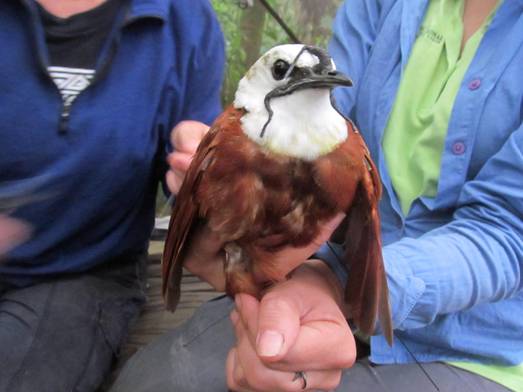
Male Three-wattled Bellbird (photo by Michael Loukides) released under a CC-NC-SA licence.
I just received in an email a press release for the Zoo Conservation Outreach Group describing recent successes in fieldwork on Three-wattled Bellbirds (Procnias tricarunculatus) in Honduras. This project aims to use satellite tags to study the migratory movements of these endangered frugivores in the Sierra de Agalta cloud forests of Honduras. I have no doubt that Isidro Zuniga, our Honduran colleague during our last field season in Honduras was greatly involved in this research.
The big mystery surrounding these odd birds (Family Cotingidae) is their complex migratory movements between cloud forests in the region. Each of these cloud forests is like an individual island of habitat in a great sea of lower level pine forests and agriculturally-dominated valleys. The birds are very evident from July to September in the Sierra de Agalta cloud forest, but then disappear for the balance of the year. The team on the ground in Honduras, led by Dr. Robin Bjork, has managed to outfit four of these birds with satellite tags which are transmitting data already.
The data generated by these tagged birds should be very interesting to say the least, and will help identify key habitat for conservation efforts.




